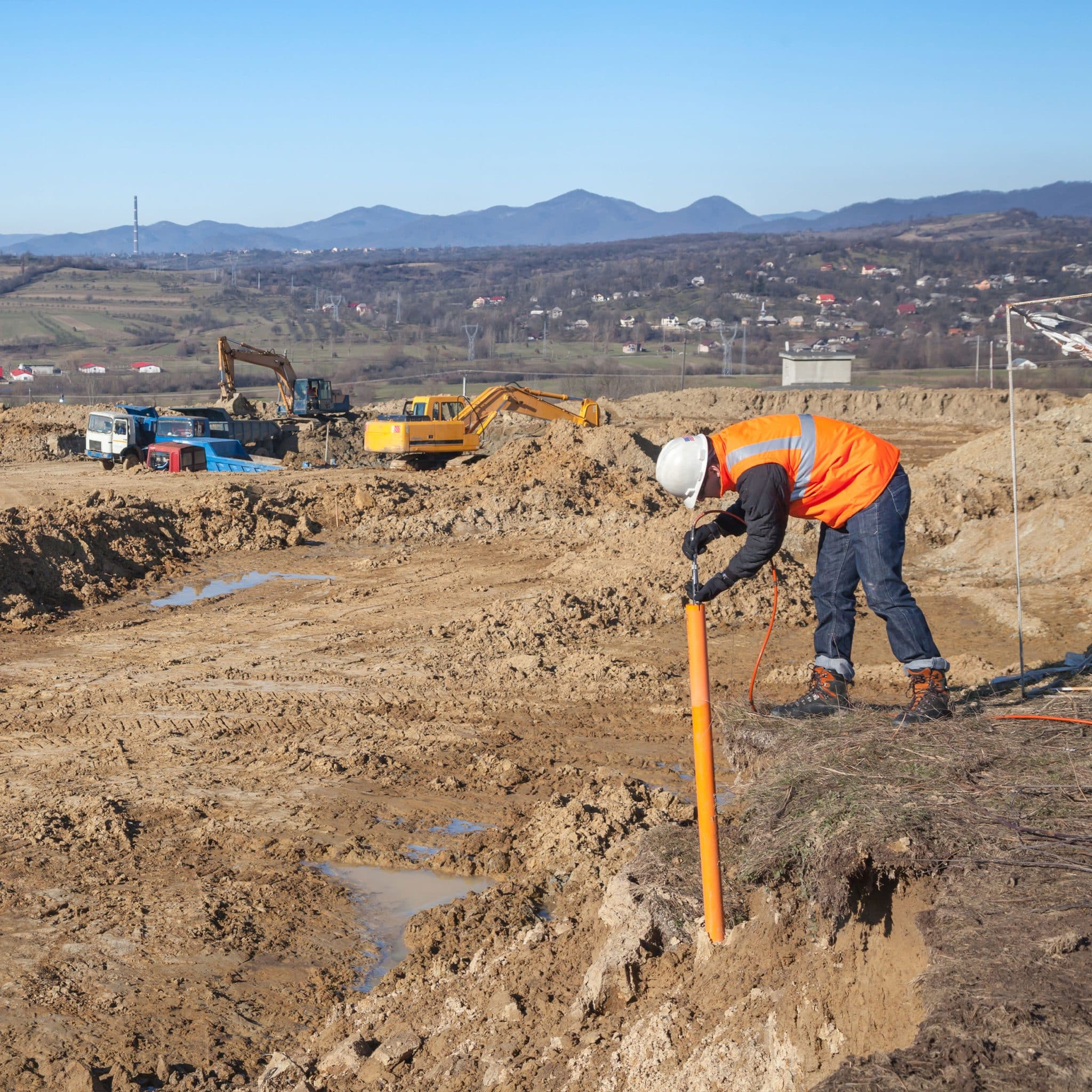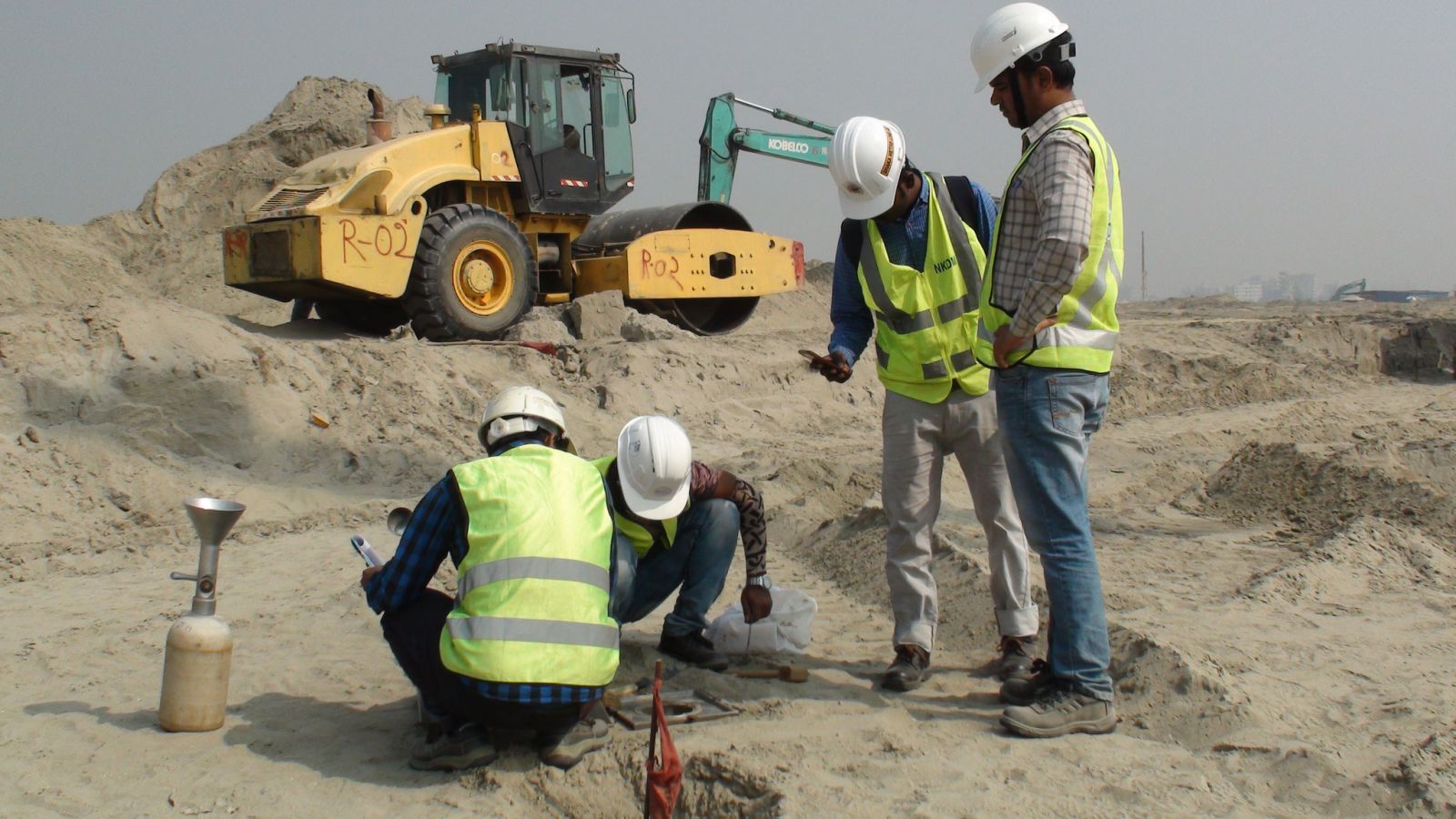The Duty of an Engineer of Record in Ensuring Structural Stability and Compliance
The Duty of an Engineer of Record in Ensuring Structural Stability and Compliance
Blog Article
The Importance of Dirt Analysis and Site Investigation in the Geotechnical Industry: Ensuring Security and Stability in Civil Engineering
In the geotechnical sector, soil analysis and website investigation are fundamental aspects that underpin the safety and security of civil engineering projects. These procedures not only expose the features of subsurface products yet additionally educate important decisions pertaining to layout and building practices. By extensively recognizing dirt properties, engineers can preemptively address prospective difficulties, ultimately securing structural stability. Nevertheless, the effects of these examinations extend past immediate task success; they can influence long-term sustainability and durability (tailings engineer). As we discover the details of these techniques, it comes to be noticeable that their importance can not be overstated.
Recognizing Dirt Residences
In the world of geotechnical design, a thorough understanding of soil residential properties is critical for notified decision-making and efficient task design. The characterization of dirt includes the exam of different physical and mechanical buildings, such as grain dimension distribution, plasticity, permeability, cohesion, and shear strength. These homes determine exactly how soil behaves under various loading problems and environmental impacts, making them critical for assessing website suitability for building projects.
Dirt category systems, such as the Unified Soil Category System (USCS) and the AASHTO category, provide frameworks for organizing dirts based on their qualities. This classification aids engineers in predicting habits under stress, water flow, and negotiation, therefore affecting style selections and building and construction strategies.
Furthermore, the communication between soil and surrounding structures is a key factor to consider in geotechnical design. Comprehending dirt residential or commercial properties assists determine possible challenges, such as liquefaction in earthquake-prone locations or extreme negotiation in soft soils. By thoroughly examining these buildings, geotechnical designers can make sure the safety and security, stability, and longevity of frameworks, eventually adding to the overall resilience of civil engineering tasks.
Approaches of Soil Evaluation

In-situ examinations include techniques such as Standard Infiltration Tests (SPT), Cone Penetration Examinations (CPT), and vane shear tests. SPT reviews the resistance of soil to penetration, supplying data on thickness and toughness, while CPT determines soil resistance and pore stress, generating continuous accounts of dirt stratigraphy. Vane shear examinations are specifically useful for analyzing the shear stamina of cohesive dirts.
Laboratory tests match these in-situ assessments and include sampling soil for regulated testing. Typical laboratory approaches include Atterberg limits, which establish the plasticity characteristics of fine-grained soils, and compaction examinations, which examine moisture-density connections. Added examinations, such as triaxial compression and unconfined compression tests, are carried out to examine the shear toughness of dirt samples under numerous conditions.
Role of Site Examination
Site examination plays a pivotal function in the geotechnical design procedure, functioning as the structure for recognizing subsurface conditions. This thorough evaluation involves organized exploration of soil and rock residential or commercial properties, groundwater levels, and other geological functions that affect job security and stability.
Usually, site examinations incorporate a variety of strategies, consisting of exploration boreholes, tasting, and in-situ screening. These techniques give crucial data on the mechanical and physical characteristics of the ground, educating designers about potential difficulties such as dirt settlement, birthing ability, and incline security.
In addition, site investigation helps with the recognition of dangerous materials and pollutants, enabling the implementation of suitable remediation actions. By establishing an accurate subsurface profile, website investigations assist to minimize risks related to construction, guaranteeing that tasks stick to security criteria and policies.
The findings from an extensive website examination not only guide layout choices yet additionally affect building methodologies and timelines. In summary, the importance of site examination can not be overemphasized; it is a vital action in the geotechnical engineering process, laying the foundation for effective project execution while prioritizing public safety and environmental stability.
Effect on Project Design
An extensive understanding of dirt attributes considerably influences project layout in the geotechnical sector. Dirt evaluation notifies engineers concerning the mechanical residential properties, composition, and habits of the ground, which are essential straight from the source consider determining the expediency and safety of a construction task. Exact information on dirt permeability, compressibility, and toughness permit for the growth of effective structure designs, making sure that structures are effectively sustained and secure throughout their lifespan.
Furthermore, the visibility of pollutants or unstable dirt layers can prompt alterations in project layout, such as selecting different building and construction approaches or products. This positive strategy reduces threats associated with soil settlement, too much loading, or lateral motion, thus guarding both the honesty of the structure and public safety.
The integration of dirt analysis right into project style likewise promotes compliance with environmental considerations and regulatory needs. By addressing soil-related difficulties early in the design process, engineers can enhance resource appropriation and decrease potential delays and prices connected with unanticipated site problems. Inevitably, extensive dirt evaluation boosts the overall top quality and toughness of civil engineering jobs, leading to even more resilient and sustainable facilities.
Situation Research Studies and Instances
Demonstrating the crucial duty of soil analysis in the geotechnical industry, different instance research studies highlight its impact on task results. One significant example is the building of a high-rise building in downtown Los Angeles, where extensive soil testing revealed unstable subsurface problems. geotechnical engineers. By recognizing the visibility of large clay, engineers were able to upgrade the structure, including deep pilings that guaranteed stability and safety, ultimately avoiding potential architectural failings

Last but not least, a dam job in the Southeast faced hold-ups because visit this page of unforeseen dirt erosion issues. Thorough dirt analysis permitted engineers to carry out reliable stabilization techniques, making sure that the dam met security policies while sticking to the job timeline. These instances underscore the requirement of thorough soil evaluation and website investigation, highlighting their essential function in achieving safe and successful civil engineering projects.
Conclusion
To conclude, soil analysis and website examination are fundamental elements of the geotechnical industry, playing a vital role in ensuring the security and security of civil engineering projects. By giving vital data on dirt buildings and subsurface conditions, these procedures inform foundation layout and building and construction approaches. Furthermore, extensive investigations contribute to threat recognition and danger reduction, ultimately improving the long life and durability of frameworks while maximizing source allocation throughout the job lifecycle.
In the geotechnical industry, dirt analysis and website examination are foundational aspects that underpin the security and security of civil design tasks. Understanding soil buildings aids identify prospective difficulties, such as liquefaction in earthquake-prone locations or excessive settlement in soft soils. SPT assesses the resistance of dirt to penetration, providing information on thickness and strength, while CPT determines soil resistance and pore stress, producing constant accounts of soil stratigraphy. These situations emphasize the requirement of comprehensive soil analysis and site examination, highlighting their necessary role in achieving safe and effective have a peek at these guys civil engineering projects.
In conclusion, soil evaluation and site examination are basic parts of the geotechnical market, playing an important role in ensuring the security and security of civil design projects.
Report this page